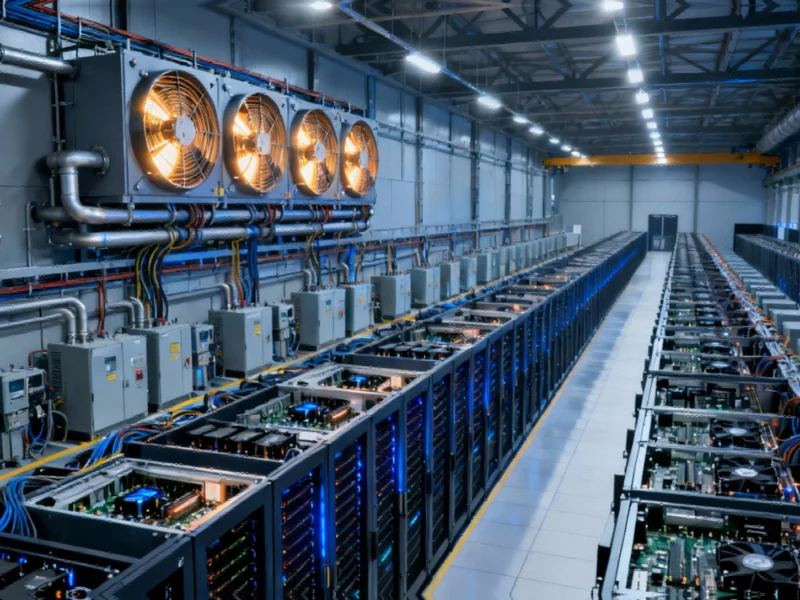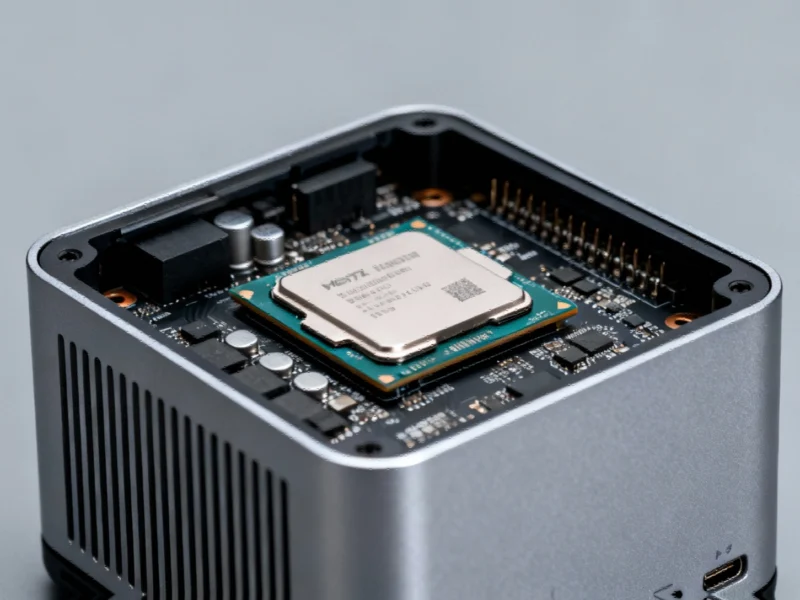The explosive growth of artificial intelligence is triggering an unprecedented expansion in data center infrastructure, with new forecasts indicating hyperscale facilities will increase their electricity consumption by 22 percent within just two years. According to fresh analysis from 451 Research, this represents merely the beginning of a much larger transformation that will see power demands nearly triple by the end of the decade.
The research, now part of S&P Global, provides concrete numbers behind what industry observers have been warning about for months. This accelerating trend follows earlier projections about hyperscale data centers driving massive infrastructure investments as detailed in comprehensive energy demand analysis that highlighted the scale of coming challenges.
The AI Infrastructure Boom
Behind these staggering power consumption figures lies the insatiable demand for computational resources to develop and train increasingly complex machine learning models. Unlike traditional data centers, AI-optimized facilities require specialized servers packed with power-hungry GPUs that generate significantly more heat, necessitating advanced cooling systems.
“The power and cooling infrastructure required for AI workloads means it’s often more practical to build entirely new facilities rather than retrofit existing ones,” explains the 451 Research report. This reality has triggered a construction boom that shows no signs of slowing, with major technology companies planning hundreds of billions in capital expenditures through the coming years.
Quantifying the Power Surge
The numbers tell a dramatic story of accelerating demand. Utility power dedicated to American data centers is expected to jump from 50.5 GW to 61.8 GW by the end of this year alone. The trajectory becomes even more striking looking further ahead:
- 2026: 75.8 GW projected demand
- 2028: 108 GW forecasted requirement
- 2030: 134.4 GW anticipated consumption
These figures exclusively represent hyperscale facilities operated by technology giants including Amazon, Apple, Google, Meta, and Microsoft, alongside leased and cryptocurrency mining sites. Enterprise-owned data centers are not included in these projections, suggesting the total impact on power grids could be even greater.
Investment Reaches Staggering Levels
The capital flowing into this infrastructure expansion reaches levels rarely seen outside of wartime industrial mobilization. Amazon anticipates spending approximately $100 billion on capex projects this year, while Microsoft is committing $80 billion to infrastructure build-out. Meta plans investments between $66-72 billion, and Google recently increased its 2025 capital expenditure forecast to $85 billion.
This massive financial commitment comes as OpenAI expands its partnerships with chip manufacturers and cloud providers to secure the computational resources needed for next-generation AI systems, further driving infrastructure demands.
Grid Reliability Concerns Mount
The rapid expansion has utilities and grid operators grappling with unprecedented challenges. Recent events have highlighted infrastructure vulnerabilities, including sophisticated cyberattacks targeting critical network infrastructure that could potentially disrupt the very systems needed to support growing data center loads.
Financial authorities are also expressing concern about systemic risks, with the IMF recently warning about vulnerabilities in interconnected financial and technological systems that could amplify disruptions.
Reality Check on Projections
Recent developments suggest some data center operators may have overestimated their actual power requirements. When AEP Ohio implemented new tariffs requiring large data center customers to pay for at least 85 percent of their subscribed power regardless of actual usage, interconnection requests plummeted from over 30 GW to just 13 GW across 36 sites.
“This revealed that some operators may have inflated their stated energy requirements,” notes the 451 Research analysis, potentially leading utilities to overinvest in grid infrastructure. The practice of submitting duplicate connection requests across different jurisdictions has also contributed to inflated projections, though the underlying trend of rapidly growing demand remains undeniable.
Geographic Shifts and Emerging Markets
Virginia and Texas currently lead in data center energy demand, with Virginia’s load expected to reach 12.1 GW in 2025 (up from 9.3 GW last year) and Texas projected to hit 9.7 GW this year (from less than 8 GW previously). However, the search for optimal locations is driving exploration of emerging markets including Idaho, Louisiana, Oklahoma, and smaller cities in West Texas.
These areas offer potential access to “stranded power” and alternative energy generation opportunities that could help mitigate grid constraints. Meanwhile, Apple continues expanding its AI capabilities with new features that will likely require additional computational resources, contributing to the broader industry trend.
Alternative Power Solutions Gain Traction
Faced with grid limitations, data center operators are increasingly considering on-site power generation systems as either primary sources or backup solutions until sufficient grid capacity becomes available. Options under evaluation include retired nuclear assets, gas-fired generation, battery storage, fuel cells, renewables, and various hybrid combinations.
“The scale of this transformation cannot be overstated,” concludes the 451 Research analysis. “We’re witnessing the creation of an entirely new energy consumption category that will reshape power markets and infrastructure planning for decades to come.” As the AI revolution accelerates, the relationship between computational growth and energy infrastructure appears destined to become one of the defining technological challenges of our time.
Based on reporting by {‘uri’: ‘theregister.com’, ‘dataType’: ‘news’, ‘title’: ‘TheRegister.com’, ‘description’: ”, ‘location’: {‘type’: ‘country’, ‘geoNamesId’: ‘6252001’, ‘label’: {‘eng’: ‘United States’}, ‘population’: 310232863, ‘lat’: 39.76, ‘long’: -98.5, ‘area’: 9629091, ‘continent’: ‘Noth America’}, ‘locationValidated’: False, ‘ranking’: {‘importanceRank’: 277869, ‘alexaGlobalRank’: 21435, ‘alexaCountryRank’: 7017}}. This article aggregates information from publicly available sources. All trademarks and copyrights belong to their respective owners.



